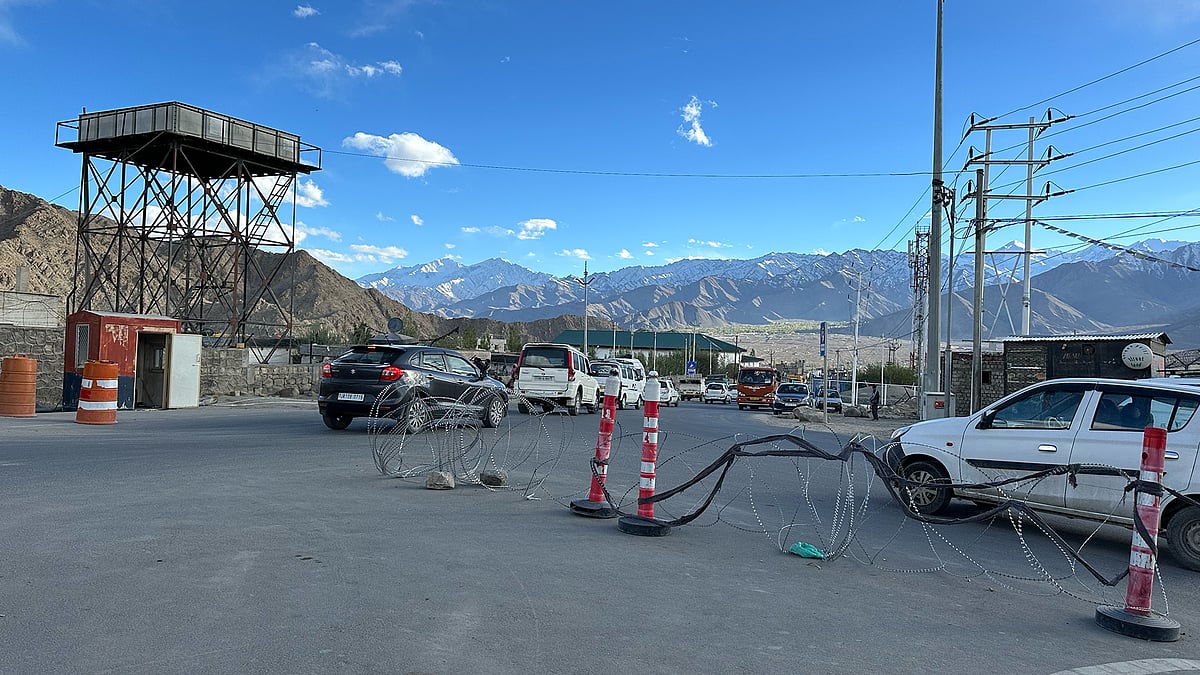
Two weeks after the violent September 24 statehood protests in Leh, parts of the city are struggling to return to normalcy. Footfall has shrunk in commercial areas, and vendors complain that business is down.
This is despite the restrictions on movement being gradually relaxed since September 27, the reopening of schools and colleges, and internet services being restored on Thursday.
A curfew was imposed and the police and paramilitary forces were deployed in the city on September 24. This came after four people were killed and 15 seriously injured in a protest that turned violent during a shutdown called by the Leh Apex Body – a coalition of socio-political groups pressing for statehood and Sixth Schedule protections for the Union Territory. Close to 70 people were detained following the protest, including prominent activist Sonam Wangchuk.
The Ladakh administration had on Thursday announced the complete restoration of normalcy. Lieutenant Governor Kavinder Gupta, chairing a high-level security review meeting in Leh, expressed “satisfaction over the prevailing calm and order across the Union Territory.”
But locals in various parts of the city are still anxious. Many refused to speak with Newslaundry out of fear of inviting police trouble. The main market bears a near-deserted look, with only a few tourists and residents, with locals claiming that migrant workers, sensing a downturn in business, are leaving Leh for their hometowns.




Local journalist Rigzin Wangmo said she had never seen the market “so empty”. “It will take more than a decade for Ladakhis to forget,” she said, referring to the police action and arrests.
Civil society groups have repeatedly pressed for the release of all prisoners, including jailed activist Sonam Wangchuk.





A local, who didn’t wish to be named, claimed that after the police crackdown, “parents are scared of letting their children out due to the fear of being picked up”.





Restaurants remain open but are occupied by only a few tourists.
Phontsok Jowngto, a staffer at a restaurant in Leh’s Tibetan Refugee Market, said, “After the September 24 incident, migrants working in Leh have returned to their home states. Most of the locals working here have also returned to their native villages.”
Tourism stakeholders across Ladakh have urgently appealed to authorities for targeted financial relief to mitigate escalating economic losses in the sector, triggered after the protest.




Tsewang Yang Dol, a 53-year-old vegetable seller in the Leh Market, said, “I managed to sell vegetables worth Rs 1,500-Rs 2,000 a day before. Now I am only able to do business worth Rs 600 to Rs 700.”





Other vendors echoed these concerns. Mamta, who runs a souvenir stall in the Main Market, claimed her business was down by 75 percent. “This whole year is like a curse. In April, after the Pahalgam attack, tourism was affected. Now, the (September 24) violence has completely screwed business.”






The Supreme Court is set to hear a plea challenging Wangchuk’s detention under the National Security Act on October 14, 2025. The court had issued notices to the Central Government and the Ladakh administration, demanding an explanation for the grounds of his detention. The plea, filed by Wangchuk’s wife Gitanjali Angmo, challenges the detention order, asserting it is politically motivated and unconstitutional.
Small teams can do great things. All it takes is a subscription. Subscribe now and power Newslaundry’s work.
Newslaundry is a reader-supported, ad-free, independent news outlet based out of New Delhi. Support their journalism, here.







